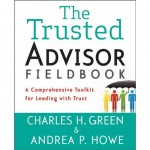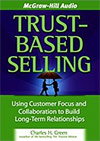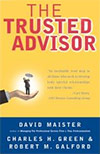It was a dream come true for marketers: The promise of digital media. Opportunities galore appeared – targeting, personalization, and optimization with tracking and testing. Finally – the ability to get the right message to the right customers. Or so it seemed.
Digital has been an improvement on traditional advertising on many fronts. But it has also been plagued with problems, from large scale fraud (projected to reach $16.4 billion in 2017), to viewability, to mass reporting issues. On top of that, there’s controversy around fake news, brand safety, offshore social media ads influencing elections, and the ability target people who subscribe to hate groups and ideology.

Digital advertising dollars continue to skyrocket with $19.6 billion revenue in Q1 2017, a 23% year-over-year growth. But brand marketers are at a breaking point that is curbing much enthusiasm. One bellwether is Proctor & Gamble’s move cutting $140 Million in digital media due to brand safety issues and threatening to slash more if agencies and publishers don’t clean up their act. And recently Uber sued its agency, Fetch, or $40 million around viewability and reporting.
To say the least, there is a strong lack of trust among brand marketers and advertisers around digital media. While these issues arise in a technologically-complicated ecosystem, the technical face of these issues obscure a larger truth: the rise of tech means that relationships matter more than ever. Publishers and media agencies have scores of sales and account management teams talking to clients every day to maintain relationships and book media. And those individuals and teams can leverage proven personal tactics to instill deeper trust in their client relationships.
Many organizations are diligently working to address these problems and provide better advertiser solutions. One issue should be central to those efforts: how do you convey to your client that your primary focus is their business objectives, not your wallet?
We’ve highlighted three key areas that digital media sales organizations can focus on to repair the erosion of trust with their marketing clients:
1) Transparency
It is human instinct to avoid conflict and not open Pandora’s Box, especially with clients. This protects us from stress. And nobody likes to admit a screw up.
However, if you bury known internal issues, like fraud or reporting problems, they are bound to arise when a savvy client digs into a report or invoice. These topics are on everyone’s minds. It feels paradoxical, but the ability to face problems directly, in a transparent manner, earns far more trust than the best PR spinner can ever do. Why not take the opportunity to build a stronger relationship and increase your own trustworthiness by addressing problems heads on?
Set a meeting with your client to address the issues and present your company’s action plan. Explain your organization’s technology, how you are working to block malware, provide accurate reporting, create the best experience for marketers around potentially sensitive content. Let them know what vendors or partners you are working to vet your audience expansion networks. Discuss your rebate or “make good” program for company errors, if you have one.
Ask your client if they really understand these issues and the technology. Let your client ask you questions. If you don’t know the answer simply say, “Great question. I don’t know but clearly I need to; let me look into that and get back to you.”
Come prepared with answers and documentation if needed. Invite your company subject matter experts from engineering, ad ops, or analytics to discuss more complex issues. But remember, this is not primarily about technical answers – this is about establishing trust through transparency.
2) Relationship Building and “Live” Correspondence
We are all accustomed to digital communications like email, text, and online chat. But these are not great channels to build trust or resolve conflict. If you want to be a trusted advisor to your client, you must take the time to communicate in a higher-bandwidth fashion: ideally in person, but if not, then by phone or video chat as the situation permits.
If your client is raising concerns over email about a problem – pick up the phone. Let them vent, without being in a rush to tell them you ‘understand their concerns’.

If they are a big enough client, meet them in person. Take them out for a dinner or a drink to discuss these problems. Make them feel comfortable about asking questions.
And let’s not forget the simple act of owning up: if the client has legitimate beef around an issue that your company botched up, make it right.
3) Invest in Client Management and Constructive Confrontation
Conflict situations are difficult even for the most experienced reps. But that doesn’t mean your team can’t be prepared with a number of proven tools and resources to work through them.
Every ad tech organization should have some form of internal program to train their client-facing reps in the ‘hard soft skills.’ Having clear guidelines helps, but it’s far from sufficient: nothing beats reps who know, in the moment, how to speak truthfully, directly, and in a collaborative manner. The last thing you want is reps who respond defensively, who shy away from confrontation, and who seek refuge in the comfortable impersonality of technical solutions.
Trusted Advisor and Trust-Based Selling programs, such as Workshops, are aimed at helping companies address these concerns. We’ve helped some very large media and advertising organizations.
For a discussion about these issues, drop me (Charles Green, CEO, Trusted Advisor Associates) a line at [email protected] or call me at (01) 973.714.4451. No email lists; no automated follow-ups; no cost and no obligation. Just let’s talk.
Talk To Us
THE TRUSTED ADVISOR FIELDBOOK
 The pragmatic, field-oriented follow-on to the classic The Trusted Advisor. Green and Howe go deep into the how-to’s of trusted business relationships—loaded with stories, exercises, tips and tricks, and deeply practical advice.
The pragmatic, field-oriented follow-on to the classic The Trusted Advisor. Green and Howe go deep into the how-to’s of trusted business relationships—loaded with stories, exercises, tips and tricks, and deeply practical advice.
FIND OUT MORE
TRUST-BASED SELLING
 “Sales” and “Trust” rarely inhabit the same sentence. Customers fear being “sold” — they suspect sellers have only their own interests at heart. Is this a built-in conflict? Or can sellers serve buyers’ interests and their own as well? The solution is simple to state, hard to live—and totally worth the effort.
“Sales” and “Trust” rarely inhabit the same sentence. Customers fear being “sold” — they suspect sellers have only their own interests at heart. Is this a built-in conflict? Or can sellers serve buyers’ interests and their own as well? The solution is simple to state, hard to live—and totally worth the effort.


